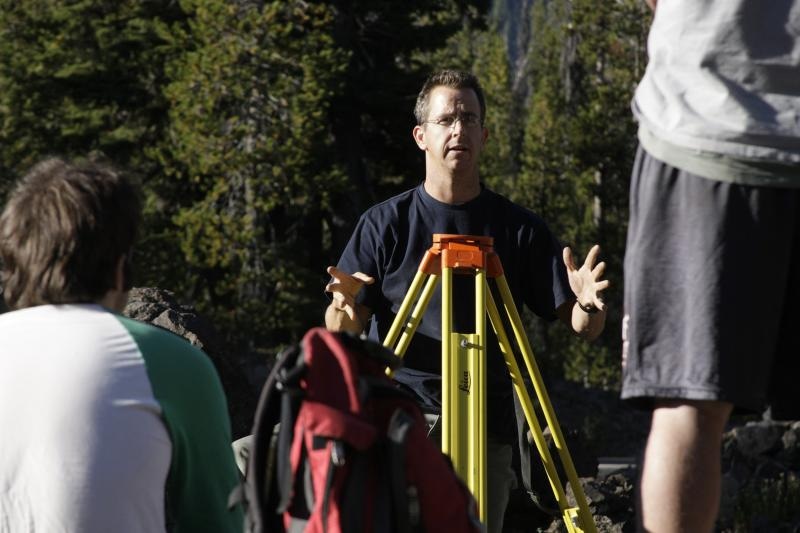Aug 18 2016
An earthquake early warning system can give people a precious few seconds to stop what they are doing and take cover before the severe shaking from an earthquake arrives. Central Washington University, along with five other western universities, is part of a $3.7 million grant from the United States Geological Survey (USGS), which will develop technology and refine ShakeAlert, the earthquake early warning system. CWU will receive just more than $441,000 for its part in this effort.
 Tim Melbourne, professor of geological sciences, with a class near Devil's Lake, Oregon, setting up new beacons for PANGA. (Credit: Central Washington University)
Tim Melbourne, professor of geological sciences, with a class near Devil's Lake, Oregon, setting up new beacons for PANGA. (Credit: Central Washington University)
“This is an ambitious undertaking, and we are pleased that the PANGA and the CWU Geodesy Lab can contribute to it,” said Tim Melbourne, CWU geological sciences professor and director of PANGA. The geodesy lab incorporates hundreds of real-time GPS sensors that record even slight movements of the Earth’s crust, and sends the information to CWU’s geological sciences lab in Ellensburg.
The USGS and its six university partners will collaborate to improve the ShakeAlert EEW system’s sensor and telemetry infrastructure across the west coast of the United States. ShakeAlert is based on the USGS Advanced National Seismic System, a federation of regional earthquake monitoring networks throughout the country, including southern California, northern California, and the Pacific Northwest.
New to these agreements is an emphasis on incorporation of real-time GPS observations into ShakeAlert. Melbourne and his colleagues alone have installed more than three-hundred GPS sensors throughout the Pacific Northwest. More than 1,000 sensors exist throughout the region, but not all are reliably integrated into a uniform software environment.
“This grant allows us to collaborate and consolidate our efforts,” continued Melbourne. “For the first time, we can coordinate—and hopefully integrate—all of our technology to provide some measure of warning for millions of people.”
CWU’s contributions to the Earthquake Early Warning system include:
- Analyzing data from existing GPS stations in real-time throughout the western United States and making them available to the ShakeAlert decision-making software
- Developing PANGA’s dedicated wireless data telemetry infrastructure so it can continue to function during a major seismic event when other means of telecommunications are down
The ShakeAlert earthquake early warning system has been in development for 10 years. The USGS estimates it will cost $38.3 million in capital investment to complete the ShakeAlert system on the West Coast to the point of issuing public alerts, and $16.1 million each year to operate and maintain it.